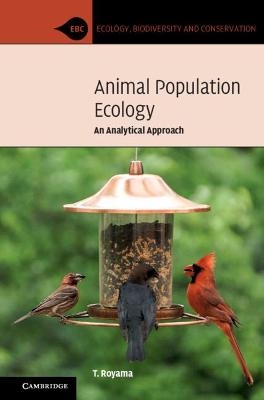
Animal Population Ecology
Cambridge University Press (Verlag)
978-1-108-94816-6 (ISBN)
Animal population ecology comprises the study of variations, regulation, and interactions of animal populations. This book discusses the fundamental notions and findings of animal populations on which most of the ecological studies are based. In particular, the author selects the logistic law of population growth, the nature of competition, sociality as an antithesis of competition, the mechanism underlying the regulation of populations, predator-prey interaction processes, and interactions among closely related species competing over essential resources. These are the notions that are considered to be well-established facts or principles and are regularly taught at ecology classes or introduced in standard textbooks. However, the author demonstrates that these notions are still inadequately understood, or even misunderstood, creating myths that would misguide ecologists in carrying out their studies. He delves deeply into those notions to reveal their real nature and draws a road map to the future development of ecology.
Tom Royama is well known for his field studies of Great Tit and Spruce Budworm, and his contribution to theoretical ecology through the innovative application of stochastic processes. His previous book, Analytical Population Dynamics (1992), had a significant impact on population ecology. He was also a recipient of a Gold Medal of Entomological Society of Canada in 1994.
1. Hunting strategies of predators as revealed in field studies of great tits; 2. The paradox of crypsis: is it effective against visual predation?; 3. Logistic law of population growth: what is it really?; 4. Reproduction curves and their utilities; 5. Generalization of the logistic model; 6. Scramble and contest competition: what is the difference?; 7. Regulation of populations: its myths and real nature; 8. Predator-prey interaction processes; 9. Interspecific competition processes; 10. Observations, analyses, and interpretations: a personal view through the spruce budworm studies.
| Erscheinungsdatum | 28.04.2021 |
|---|---|
| Reihe/Serie | Ecology, Biodiversity and Conservation |
| Zusatzinfo | Worked examples or Exercises |
| Verlagsort | Cambridge |
| Sprache | englisch |
| Maße | 151 x 227 mm |
| Gewicht | 470 g |
| Themenwelt | Naturwissenschaften ► Biologie ► Ökologie / Naturschutz |
| Naturwissenschaften ► Biologie ► Zoologie | |
| ISBN-10 | 1-108-94816-2 / 1108948162 |
| ISBN-13 | 978-1-108-94816-6 / 9781108948166 |
| Zustand | Neuware |
| Haben Sie eine Frage zum Produkt? |
aus dem Bereich


